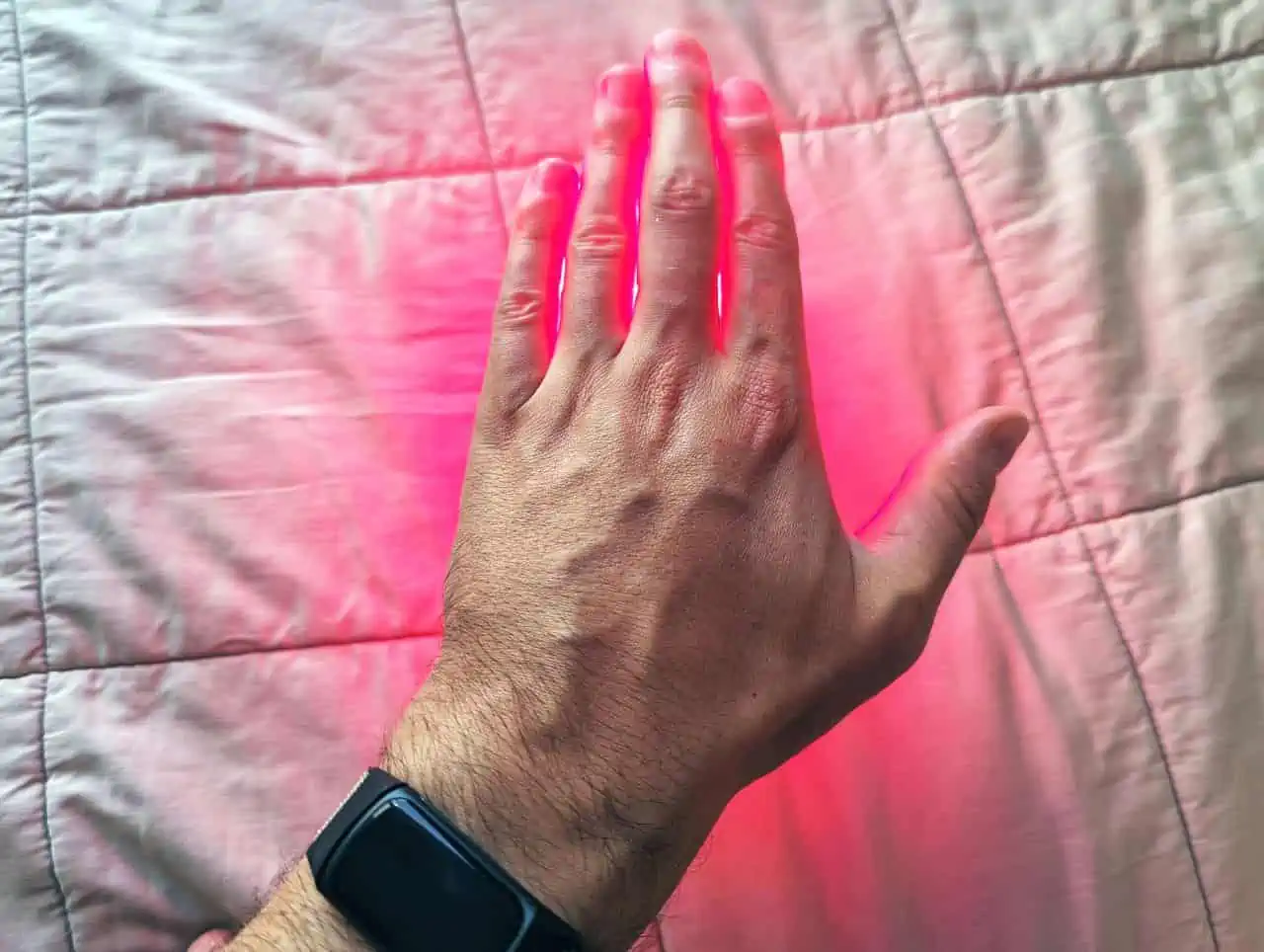Rock climbing is a great way to get out and enjoy the natural world while also getting a workout. However, it can be hard on your body, especially if you’re not used to it. Finger and toe strains are common injuries for climbers, but they don’t have to keep you from the rocks. Red light therapy can help speed up the healing process and may be an effective treatment for rock climbing injuries. Or at least, that’s been my experience.
In this article, I’ll discuss using red light therapy at home to (potentially) speed up recovery from rock climbing injuries. Remember that I’m not a doctor, and nothing I say here is medical advice. I’m just a man with a passion for rock climbing that likes to experiment with cutting-edge health technologies, and red light therapy has been my latest obsession.
What is red light therapy, and how does it work?
I learned about red light therapy several years ago from Lost Falco. This fellow talked about LLLT and red light therapy extensively on his blog and in YouTube videos, and he was the one who piqued my interest in this potential treatment modality.
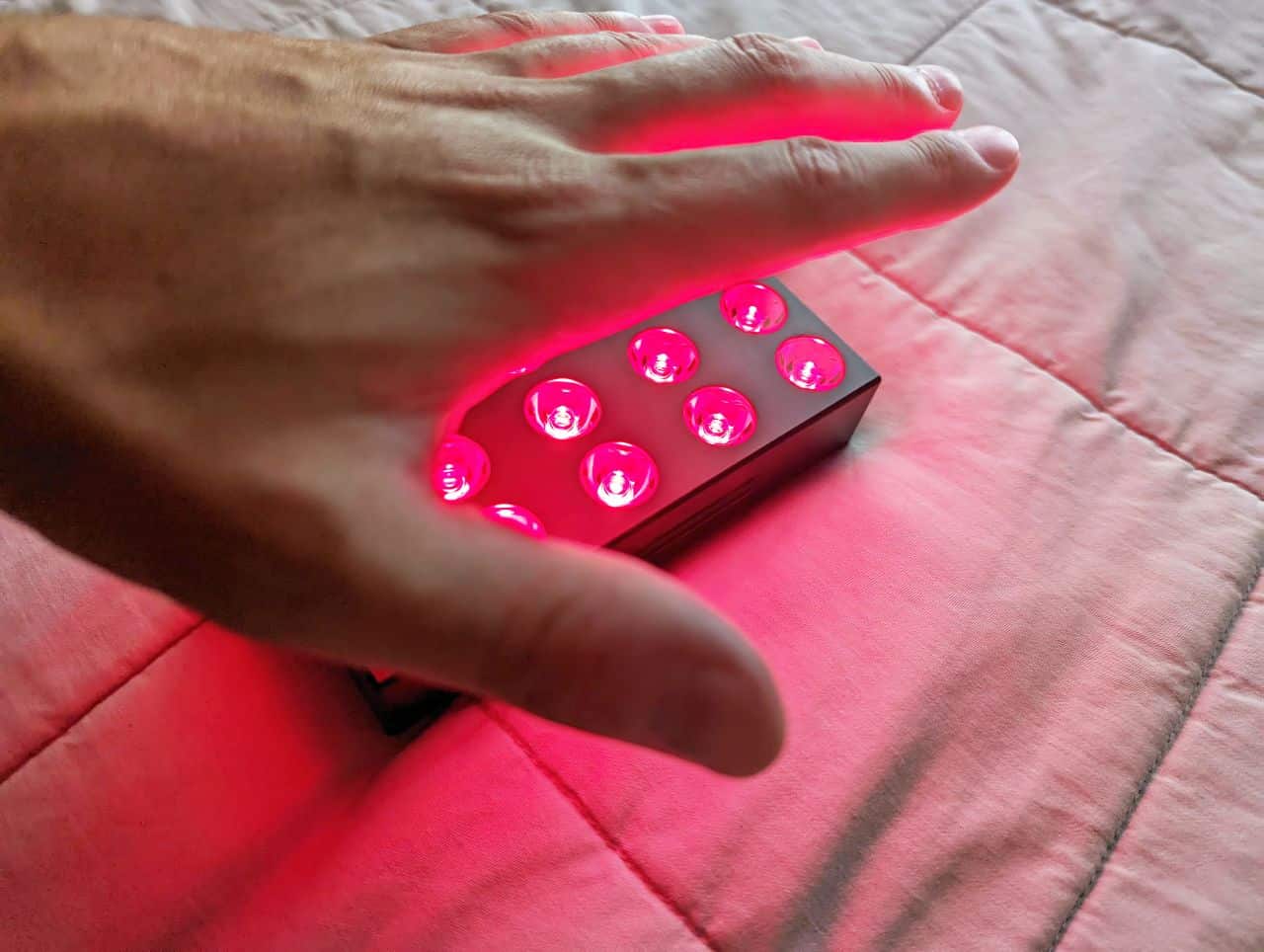
Red light therapy is a form of low-level light therapy that uses red and near-infrared light to stimulate healing and regeneration. The red and near-infrared light waves penetrate the skin deeply, stimulating mitochondrial activity and increasing ATP production. This, in turn, leads to a host of beneficial effects, including improved tissue regeneration, reduced inflammation, and accelerated healing.
Much early research on red light therapy was conducted on NASA astronauts. Researchers found that red light therapy could help mitigate the detrimental effects of spaceflight on the human body. Since then, red light therapy has been studied extensively for various applications.
There’s a growing body of evidence to suggest that red light therapy may be an effective treatment for a variety of different injuries and conditions, including:
- Tendonitis
- Arthritis
- Muscle strains
- Wound healing
- Neuropathy
- Depression
Red light therapy is called “photobiomodulation” or “low-level light therapy.” It’s a non-invasive, drug-free treatment that is becoming increasingly popular as more and more people learn about its potential benefits.
And, of course, this sounded especially interesting to me since my fingers, toes, elbows, and knees take a beating when I’m rock climbing.
How can red light therapy help climbers recover from injuries?
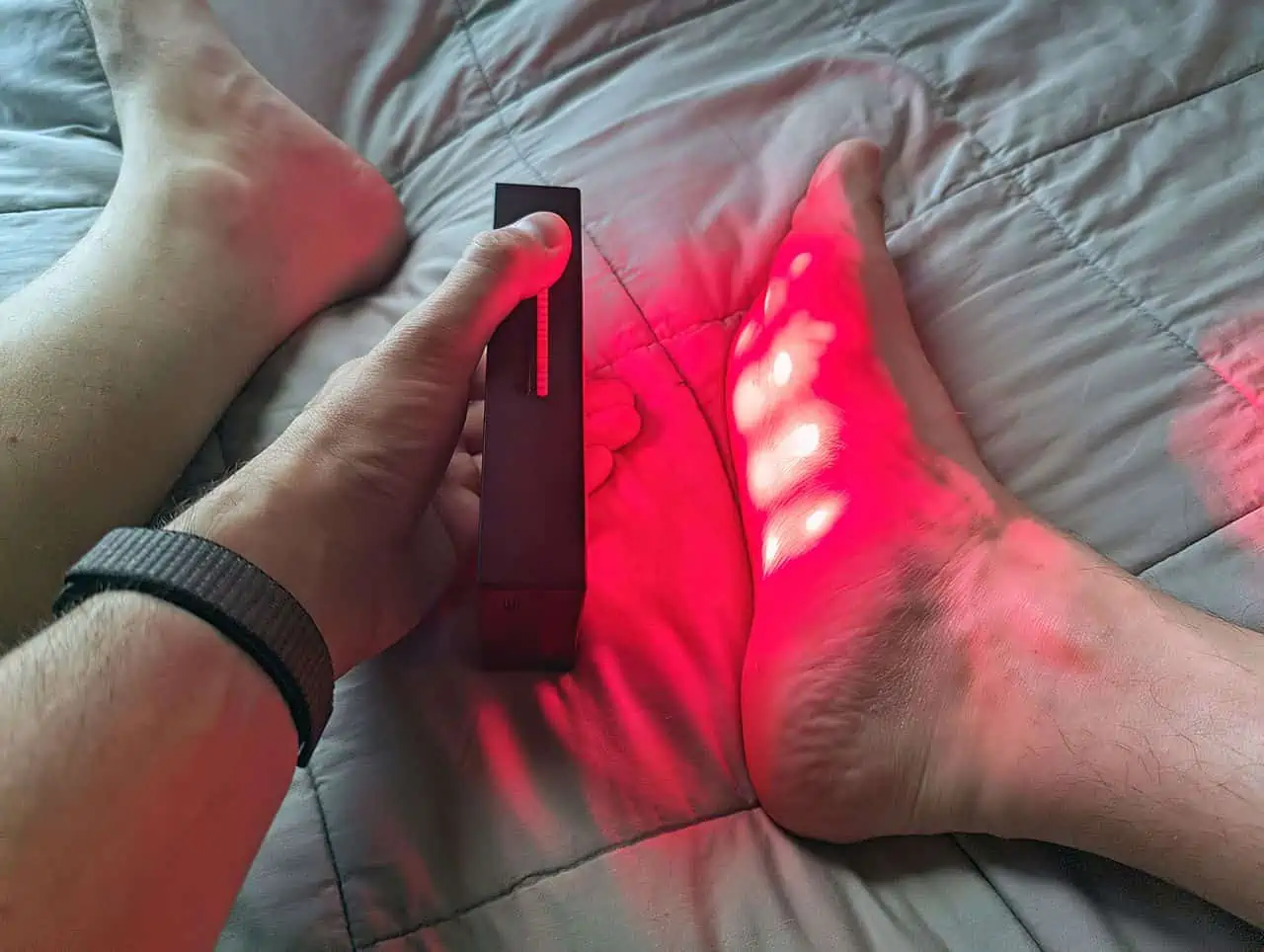
One of the main ways that red light therapy can help climbers recover from injuries is by reducing inflammation. Inflammation is a natural part of the healing process but can also delay healing and cause pain. Red light therapy has been shown to reduce inflammation, which can help speed up the healing process.
Red light therapy is an effective anti-inflammatory treatment, and this can be helpful for climbers recovering from injuries like tendonitis, bursitis, and arthritis.
In addition to reducing inflammation, red light therapy may help stimulate tissue regeneration and accelerate wound healing. This can benefit climbers recovering from finger strains, muscle strains, and other injuries. This is particularly interesting since I often get finger strains from rock climbing.
One study found that red light therapy effectively treated carpal tunnel syndrome, a common condition among climbers. The study found that red light therapy improved symptoms and reduced the need for medication or surgery.
There is also some evidence to suggest that red light therapy may help improve nerve function and reduce pain. This can be helpful for climbers recovering from injuries like nerve damage or neuropathy.
Finally, red light therapy has been shown to have anti-depressant effects. This is important because depression is common among people with chronic pain and can delay healing. Red light therapy may help improve mood and accelerate healing.
Red light therapy has been around for decades, but it’s only recently gained popularity as a treatment for injuries and conditions. There is still a lot of research to be done on red light therapy, but the preliminary evidence is promising.
What’s my experience with using red light therapy to treat climbing injuries?
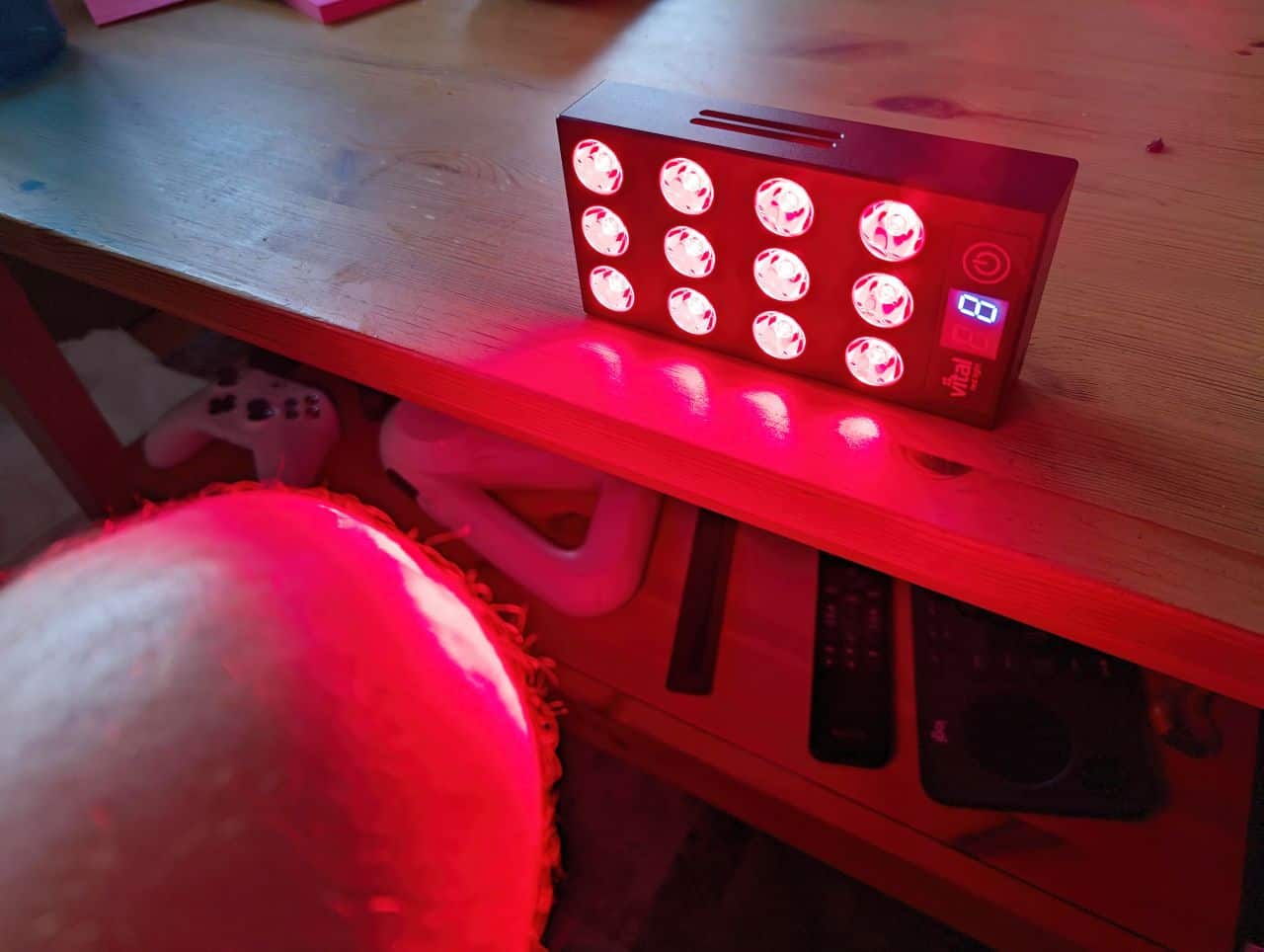
I generally wait weeks or months to review a product on my blog, but I’m so excited about red light therapy that I will make an exception.
I’ve been using a red light therapy device for several weeks to help treat some finger and toe strains I got from rock climbing. And I have to say that I’m impressed!
The red light therapy device I’m using is the Vital Charge from Vital Red Light. It’s a small, portable device that emits red and near-infrared light. I use it for about 20 minutes daily, and I’ve found it to be very effective in a short amount of time at reducing the pain in my middle and pinky fingers on both hands.
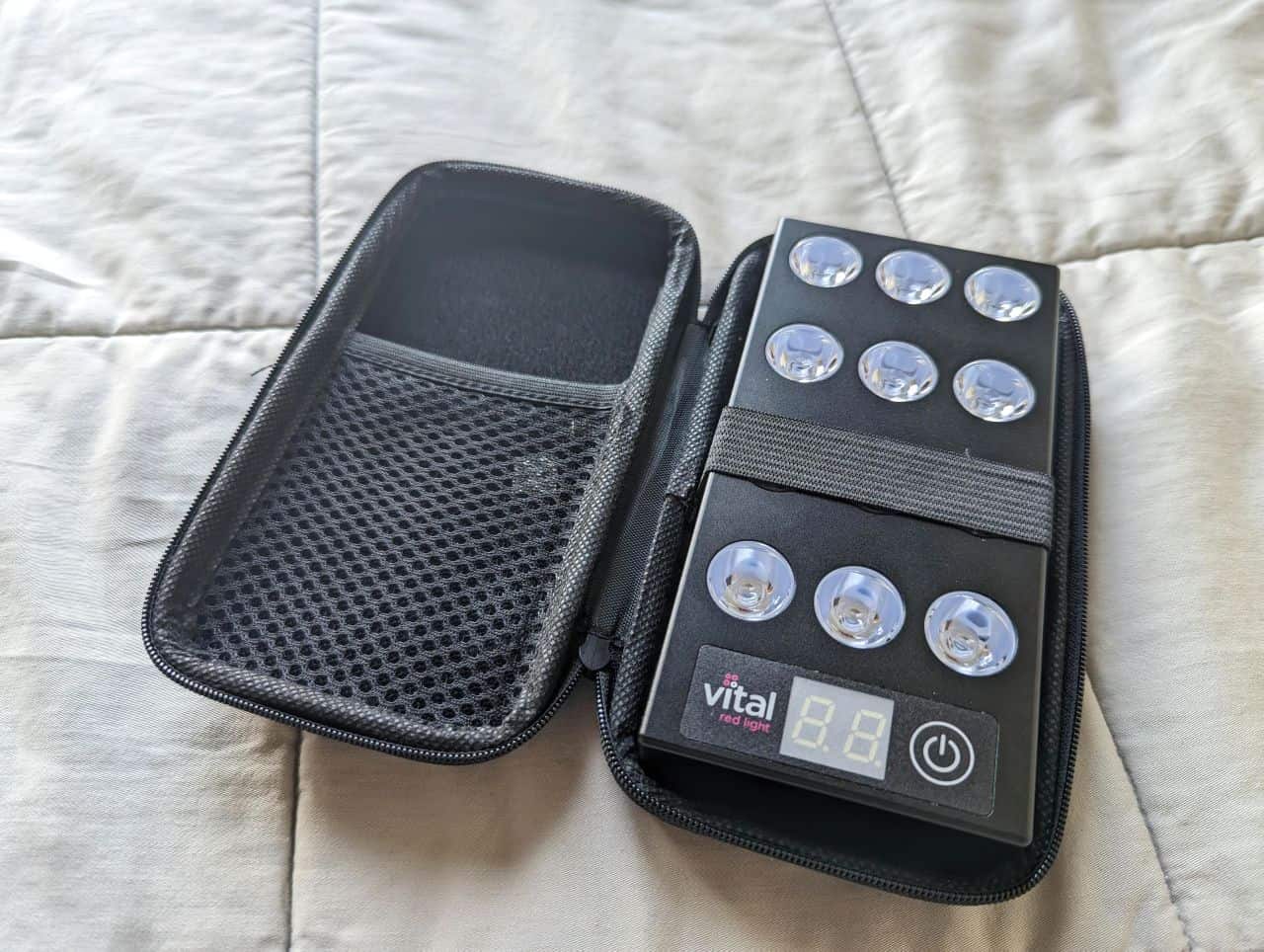
If my pain was a level 7 out of 10, it’s down to 3 out of 10 after just a few days. And while I know that may sound unrealistic, that’s been my experience. I went into this “experiment” with low expectations and was blown away.
I’m able to crimp tiny holds with my “problem fingers” with minimal pain or stress now, which is impressive given that just a few weeks ago, I couldn’t even put any weight on those fingers without pain.
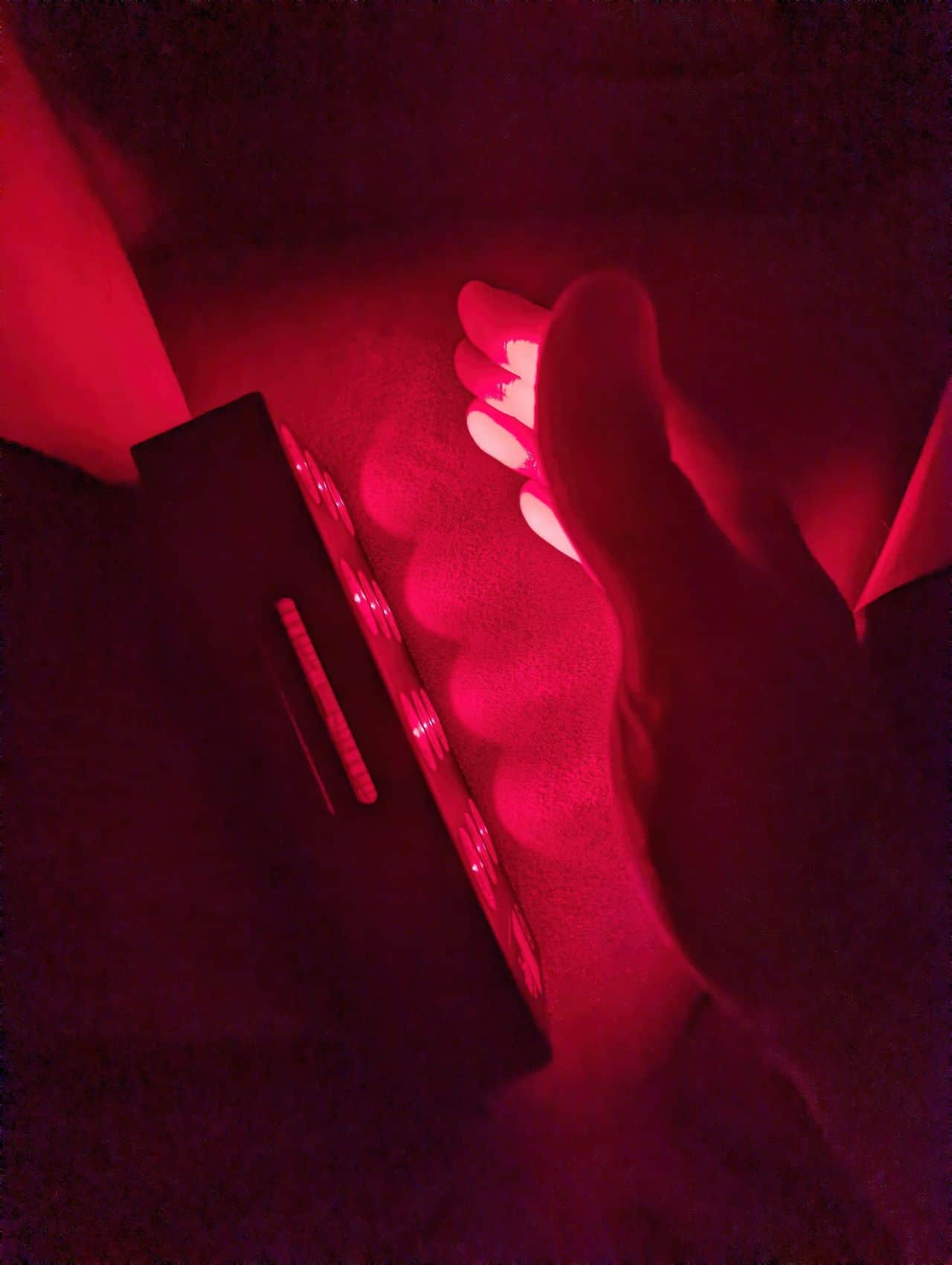
I still have some lingering pain and stiffness, but red light therapy seems to have helped me recover from my rock climbing injuries much faster than I would have without it.
How do you use red light therapy to treat rock climbing injuries at home?
Follow the instructions that come with whatever device you choose. But as a general rule of thumb, I illuminate my hands and feet twice daily for ten minutes.
The first time right after I wake up and I’m in bed, and the second at night while I’m watching TV. I don’t use it more than that because I find that to be the sweet spot for reducing my inflammation and pain without spending a ton of time on this.
Update: It’s been a few more months since I wrote this review, and I noticed another improvement from using the Vital Charge. Illuminating my chest and face before bed consistently improves my HRV (Heart Rate Variability) by 15 points. That’s a significant increase, and I’ve noticed that this improves my sleep quality. I didn’t expect this, but it’s welcome.
What are your experiences with red light therapy?
Have you used red light therapy to treat any rock climbing injuries? How did it work for you?
I’m curious to hear about other people’s experiences with this emerging treatment. So please, leave a comment below and let me know!
